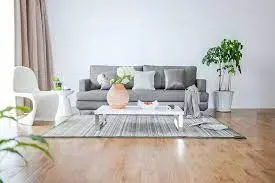Introduction
Selecting the right soft materials is essential when furnishing your home. Soft materials not only enhance the comfort of your living spaces but also elevate the overall aesthetic appeal and ambiance of your home. Fabrics, upholstery, and cushions are pivotal in adding both comfort and style. Choosing quality soft materials creates a warm, cozy, and inviting atmosphere — making your home a true sanctuary for relaxation and enjoyment.
Discover the perfect cushion covers to complement your décor at covermycushion.com.
Understanding Different Soft Materials
Before choosing materials, it’s important to understand the variety of soft fabrics available for home furnishing. Popular options include cotton, linen, silk, and velvet, commonly used in upholstery, curtains, and bedding. Additionally, fabrics like faux fur, microfiber, and chenille are favored for their plush texture and durability. Each material offers unique benefits suited for different rooms and uses.
Assessing Comfort and Texture
Comfort and texture are paramount when selecting soft materials. Consider the intended use—whether for seating, bedding, or decorative accents—and choose fabrics that balance softness with resilience. Always touch and test fabrics to ensure they meet your comfort preferences and tactile expectations.
Considering Durability and Maintenance
Soft furnishings should withstand everyday wear, especially in high-traffic areas or homes with children and pets. Prioritize durable fabrics that resist stains and fading. Evaluate maintenance needs as well—some materials require professional cleaning, while others are machine washable or easy to spot-clean, making upkeep hassle-free.
Evaluating Colours and Patterns
Color and pattern selection can dramatically influence your home’s atmosphere. Choose hues that align with or complement your existing décor to maintain harmony. Whether opting for bold patterns to create a focal point or subtle tones for a minimalist style, soft materials allow for versatile design expressions that enhance any room.
Prioritising Eco-Friendly Options
With growing environmental awareness, selecting eco-friendly soft materials is more important than ever. Sustainable fabrics such as organic cotton, bamboo fiber, hemp, and recycled polyester offer comfort and style while minimizing ecological impact. These materials support responsible production and can help reduce your home’s carbon footprint.
Complementing Existing Decor
Ensure your chosen soft materials complement your home’s existing style and theme. Sleek, minimalist fabrics work well in modern interiors, while rich textures like velvet or brocade enhance traditional or eclectic spaces. Thoughtful selection helps to unify your décor, creating a cohesive and inviting environment.
Budget-Friendly Choices
Furnishing with quality materials doesn’t have to be expensive. Establish a budget and explore affordable yet stylish soft materials that meet your needs. By comparing prices, quality, and longevity, you can find excellent options that combine comfort and aesthetic appeal without overspending.
Selecting Soft Materials for Different Areas
Different rooms require different types of soft materials to maximize functionality and style. Bedrooms benefit from soft, breathable fabrics such as cotton and linen for bedding and curtains, while living rooms thrive with cozy, plush fabrics like velvet or chenille for sofas and cushions. Tailor your fabric choices to the specific needs of each space.
Customization and Personalization
Personalize your home décor by customizing soft materials. Options like embroidery, monogramming, or fabric painting allow you to create unique pieces that express your personality and style. Customized cushions, throws, or upholstery can serve as statement pieces that enrich your living spaces.
Seeking Professional Advice
If you feel overwhelmed by choices or want expert input, consult with an interior designer or home furnishing specialist. Professionals can guide you through fabric selection, combining aesthetics with practicality to create a welcoming and harmonious environment tailored to your needs.
Conclusion
Choosing the ideal soft materials for your home furnishings significantly impacts both comfort and style. By understanding material types, prioritizing comfort, durability, and eco-friendliness, and considering budget and décor compatibility, you can transform your house into a beautiful, cozy retreat that reflects your lifestyle and values.
Additional Insights on Choosing Soft Materials for Home Furnishing
Soft materials in home furnishing not only serve an aesthetic and comfort purpose but also influence the acoustics and thermal insulation of a room. Fabrics such as thick velvet or layered curtains help reduce noise and maintain warmth, making spaces more serene and energy-efficient. Additionally, advances in textile technologies now offer stain-resistant, antimicrobial, and hypoallergenic fabrics, enhancing the practicality of your choices. Keeping these factors in mind ensures your home stays comfortable, stylish, and healthy year-round. Always invest in quality fabrics that align with your lifestyle and environment for lasting satisfaction.
FAQs
When selecting upholstery fabric, consider durability, stain resistance, and comfort. Opt for fabrics like microfiber or synthetic blends that offer easy maintenance and long-lasting performance.
Yes, mixing different soft materials adds depth and visual interest. Ensure they complement each other in color, texture, and style for a cohesive look.
Yes, eco-friendly options include organic cotton, bamboo fiber, hemp, and recycled fabrics. These sustainable materials help reduce environmental impact while providing comfort and durability.
Want to know about ‘Budget-Friendly Soft Furnishings‘? Check out our ‘Decoration‘ category.



